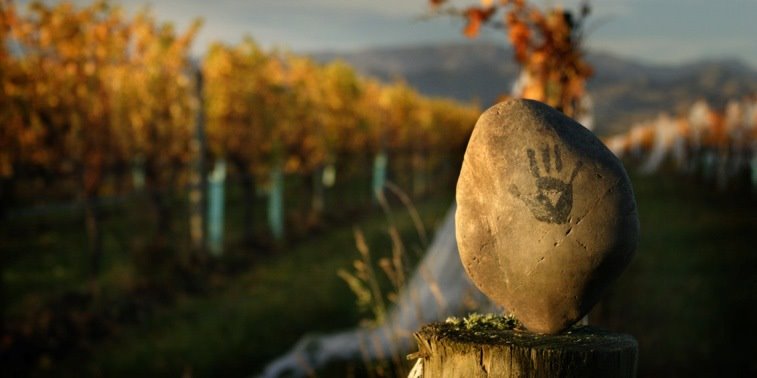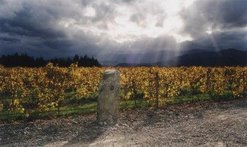Diary of a WWOOFer
September 1
Today was another sunny day in Marlborough, and my first day WWOOFing at Seresin. The Seresin vineyards have an abundance of plant growth and the land looks healthy and lively. I met the vineyard team who were warm and keen to help me learn more about organics and biodynamics. They range from PhD graduates to gardeners, from India to Nova Scotia and work in all areas from pruning to milking to biodynamic preparations.
Right off the bat I got my hands dirty in the vegetable gardens in the Home Vineyard where rows of grapes have been removed. Sean (a well travelled farming guru) and I planted hundreds of onions using Japanese Nawashi tools to break up the soil. At 10am the team breaks for 'smoko' where we gather eggs, vegetables and rocket for a snack and people share fresh bread and cheese they've made.
In the afternoon Rob (an ex-Psychology professor) and I suited up like astronauts to go and check the beehives. Thousands of buzzing bees greeted us and we checked for Verroa mites which kill the hive and its honey production. The hive was thriving so we split it to start a new hive and in 21 days a queen will have been chosen and the new hive will grow.
September 3
The vineyard has about 40 chickens, ranging from zebra-striped barred-rocks to 1970's wallpaper patterned barnavelda, which produce eggs for the staff and the shells are used in the compost for their calcium. The chickens spend their days exploring every nook and cranny of the farm, and sometimes lay in the strangest places. This morning Erin (the apprentice) and I cleaned the coops and collected dry pine needles to lay in their cubbies.
Afterwards we walked Bill and Tom, our two clydesdale horses, to a fresh field so we could collect their manure for compost. The friendly giants are used to pull the spray machines in the vineyard.

Wendy and Kevin showed me how to make cowpat pits that result in highly nutritious soil for the crops. We turned a bathtub full amount of cow manure collected from the dairy cow over the week, added crushed eggshells and basalt meal until it was aerated and mixed. We placed the manure into brick pits in the ground where earthworms will work to decompose it. Finally we added biodynamic preparations 502-507; yarrow, chamomile, stinging nettle, oak bark, dandelion and valerian. In three months this decomposed mix will be spread through the vineyard to increase moisture absorption, earthworm and humus forming bacterial activity, and root penetration.
September 6
First thing this morning, I met Olga the milking cow. Wendy (a biodynamic expert) and I collected her from the vineyard and took her to the milking shed where she was given a treat of molasses, water and a salt crystal to lick. I learned how to squeeze the udder, pulling the milk down to prevent mastitis. From 4 udders and 4 hands we gathered 8 litres of milk! Afterwards I took Olga outside for a thorough brush. We returned her to the vineyard to roam freely and I collected her manure for future cow pat pits.

Back in the meticulously clean milk shed, we filtered and bottled the milk, to be separated from the cream tomorrow. I put yesterdays milk into a huge bottle and churned it for an hour until it turned into butter. Once solid, I washed the rem
aining milk from the butter and molded it into bricks. For lunch our guests from the Nelson Wine Company in Melbourne were served some very fresh butter!
September 7
Today I learned how to make compost tea. On our 1980's Jeep we collected year old compost as dark as 70% chocolate. All organic waste is saved daily to contribute to the compost. We took the compost to the mixing tanks where we added water, biodynamic preparations, molasses and sweet-smelling seaweed which had been aerated in a freeflow tank, and we left this all to mix. This liquid seaweed fertiliser will be sprayed on the estate at a later date to improve the health of the soil and grape growth.
Later on, the rest of the onions were planted and I weeded the raspberry field. I picked fresh leeks and potatoes from the gardens which I used to make a delicious soup.
By Meg Blakeman, WWOOFer from Niagara-On-The-Lake, Canada. September 2010.









.jpg)
No comments:
Post a Comment